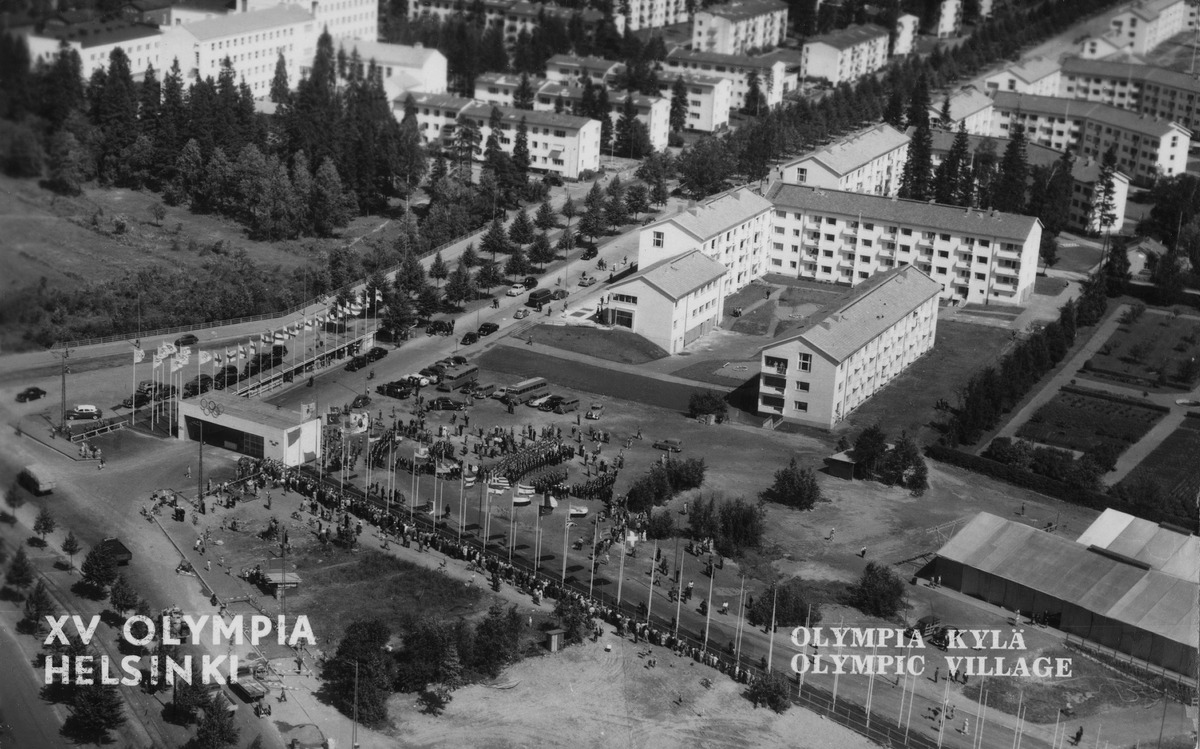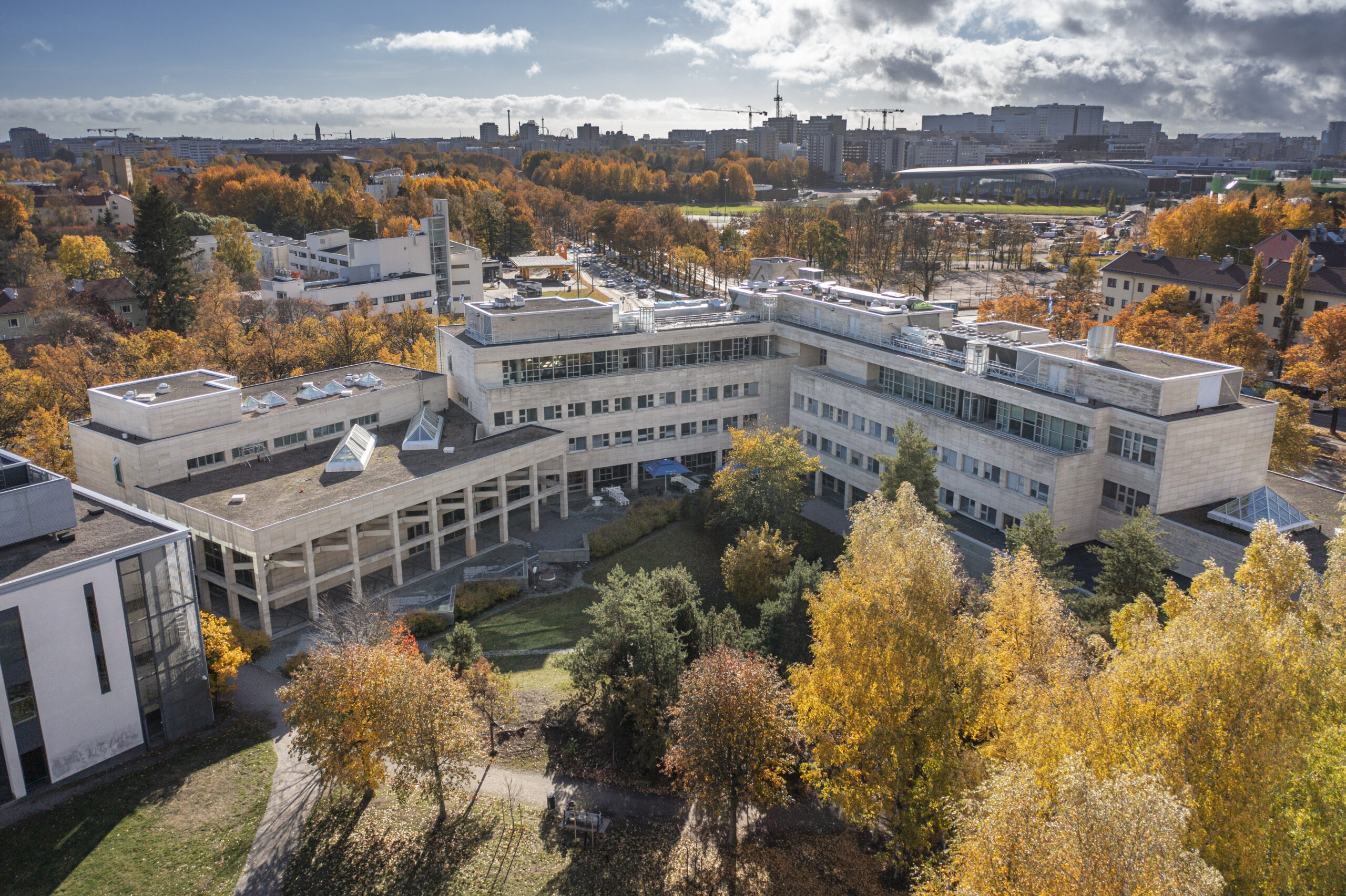
Picture taken by Veljekset Karhumäki Oy, Taken in 1952, source: helsinkikuvia.fi
Käpylä 87 has been a home base for sports and active life and brands associated with them throughout its existence. And why not, because out of all the neighborhoods in Helsinki, Käpylä certainly has the strongest connection to sports.
When the 1940 Summer Olympics were planned to be held in Helsinki, which ended up being canceled due to the war, Olympic village was built between Puu-Käpylä and Koskelantie. Kisakylä (Athletes' village) built for the 1952 Olympics, is located next door, south of Koskelantie. The Helsinki velodrome was also built for Olympic use, and American football, field hockey and lacrosse are all played on the field within the velodrome. More familiar sports can be practiced at the Käpylä sports park, or "Ravis" which operated as a horse racing track until 1977 and is now home to soccer in the summer and ice sports in the winter. Not far from Käpylä 87 is also the Mäkelänrinne swimming centre, the home of competitive swimming in Finland.

Valokuvaaja: Olympia-Kuva Oy, 1952. Lähde: helsinkikuvia.fi

An aerial picture of Käpylä 87.

Picture taken by Möller, B, 1956. Source: finnaa.fi
The year 1987 was full of events. Independent Finland turned 70 and Helsinki celebrated its 175th year as the capital of the country. The world's population reached the 5 billion mark. The use of seat belts in the back seat became mandatory in Finland, and on "Black Monday" October 19th, stock prices around the world collapsed. In the field of sports, Seppo Räty won gold in Javelin at the Track & Field World Championships in Rome and cross-country skier Marjo Matikainen was chosen as the athlete of the year for the second year in a row.
On September 16th, 1987, the head office of the Amer corporation was inaugurated in Käpylä, Helsinki. 300 guest arrived, the most prestigious of whom was the Finnish Prime Minister Harri Holkeri, to celebrate the commissioning of the building.


Sport returns to Käpylä 87 in the form of innovative and playful space design. We respect and emphasize the original purpose of the design classic as the headquarters of a large company representing sports brands by bringing sports back to the property.
Common spaces, such as corridors and lobbies, are modernized and decorated with fun details and references to different sports. The interior elements use e.g. recycled tennis and padel balls and other sports equipment, which avoid the landfill and can be displayed to bring joy to the people who work and visit the property.